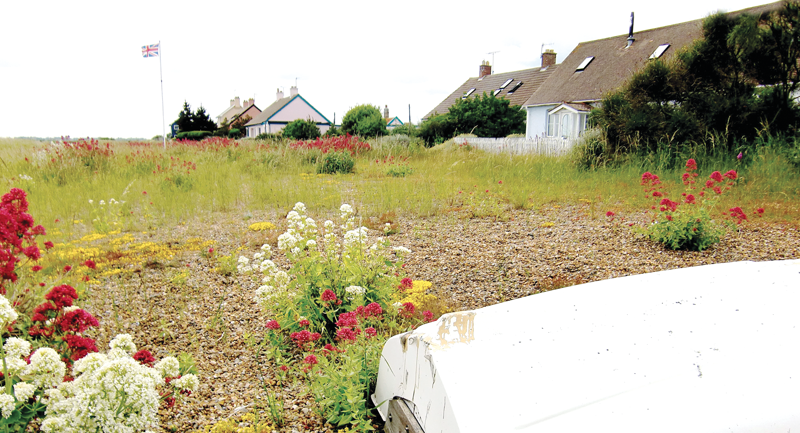- A feature from the June 2016 issue of Suffolk Norfolk Life magazine
 Click to view this issue »
Click to view this issue » - Category
- Nature, Places
The coastal hamlet has just 60 residents, but is packed with wildlife, says Laurie Forsyth
This is an edgy place that offers nothing to most people, and everything to a few. It is raw and elemental, where land and sea collide in a world of stones, sea and wind, and where racing currents build new shingle islands offshore only to destroy them a week later.
Shingle Street is just what its name suggests – a hamlet of weather-tested cottages in a wasteland of stones. Ragged Union Jacks stream in the salty wind: the people who live here may see themselves at the frontier – the most easterly people on this stretch of the ever-changing Suffolk coast.
They share their solitude with a fine array of Suffolk wildlife in the shingle, saltmarsh, intertidal mud, brackish lagoons, sea walls, hedges, grass pastures and even the wind-blasted cottage gardens. It is well known that the hamlet and its surroundings are rich in flora and fauna – but just how rich? The hamlet lies partly within a Site of Special Scientific Interest, which itself lies within the Suffolk Coast and Heaths Area of Outstanding Natural Beauty. Impressive as these designations sound, the residents of Shingle Street have seen the need for an inventory of the flora and fauna in the many habitats in their community. These are uncertain times for our national economy, and budgetary and political undulations are reshaping the priorities for housing development and coastal defence. Backed by EU environmental law, the project could be a highly effective ecological defence in the future if the need arises. The work has been conducted by a professional ecological survey team and volunteer recorders, and is entitled Knowing your Place: Wildlife in Shingle Street.
The people who love Shingle Street look forward to the annual flowering in the sea of stones. From midsummer, the acres of shingle are transformed into a painter’s palette of colour. Red, pink, white, purple, blue, yellow, cream: you would snap up these wild flowers if you saw them in a garden centre. Valerian, sea kale, sea campion and stonecrop are especially abundant. Most shingle plants are native species that have lived in this spectacularly hostile environment for millennia, and they have learned survival the hard way. Their main enemies on the stony beach are the scarcity of fresh water, plus a complete absence of shade, with relentless winds strong enough to loosen roots, as well as moisture loss through leaves, and trampling by visitors. Salt? It is lethal to most plants, but the beach flowers have developed a tolerance to it: they certainly don’t need it, despite living in a place that is forever salty.

